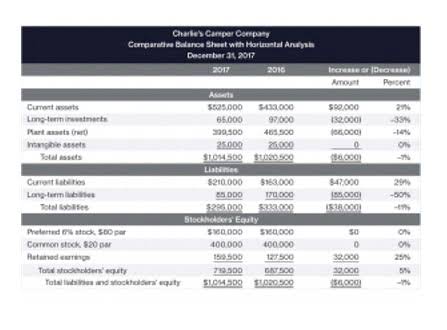
They provide indicators of a company’s long-term viability and overall financial stability. Although solvency ratios provide vital information about a company’s long-term financial health, there are some limitations to consider. Also, solvency can help the company’s management meet their obligations and can demonstrate its financial health when raising additional equity. Any business looking to expand in the long term should aim to remain solvent. Solvency ratios are extremely useful in helping analyze a firm’s ability to meet its long-term obligations.
How Companies Measure Solvency: Understanding Debt and Capital Ratios
As an investor, you would certainly want to assess a firm’s liquidity ratios as well as its solvency ratios which are important parameters to give a go-ahead for an investment decision. A negative shareholders’ equity indicates lack of long-term solvency refers to: potential insolvency, while a positive value signals that the company is solvent and can handle its enduring financial obligations. The cash flow also offers insight into the company’s history of paying debt.

Access Exclusive Templates
Solvency and liquidity are both vital for a company’s financial health and ability to meet its obligations. Liquidity refers to both a firm’s ability to pay short-term bills and debts and its capability to sell assets quickly to raise cash. Solvency refers to an enterprise’s ability to meet long-term debts and continue operating into the future. The solvency ratio measures a company’s ability to meet its long-term obligations as the formula above indicates.
Quick Ratio
The key when looking at a company’s solvency is to test a number of different debt ratios to get a fuller picture of the business’s long-term financial well-being. Solvency refers to a company’s ability to meet its long-term financial obligations. Once solvency is lost that company is said to be insolvent, which leaves it with no other choice but to enter bankruptcy in order to liquidate.
- It is calculated by dividing the earnings before fixed charges and taxes by the fixed charges.
- Assets such as stocks and bonds are liquid since they have an active market with many buyers and sellers.
- Solvency, on the other hand, is the ability of the firm to meet long-term obligations and continue to run its current operations long into the future.
- Companies should manage their capital adequately to ensure liquidity and maintain a surplus of assets over liabilities.
- A negative shareholders’ equity indicates potential insolvency, while a positive value signals that the company is solvent and can handle its enduring financial obligations.
Are Solvency Ratios the Same for Every Company?

One key test is to look at the solvency ratio, which measures a company’s ability to meet its debt and other obligations. It is calculated by adding net income (or after-tax profit) to depreciation and then dividing that by a company’s short-term plus long-term liabilities. The lower the solvency ratio the more likely a company will default on its debt in the future. But it’s not simply about a company being able to pay off the debts it has now. DSCR assesses a company’s ability to service its current debt obligations with its operating income.

How to find a company’s financial solvency
Solvency and liquidity are related, but very distinct, terms that are valuable to investors. When a company is solvent, it means the company has the ability to pay its debts and liabilities over the long run. When a company is liquid, this means the company has significant cash on hand to pay short-term debts or the ability to get cash quickly. The company’s current ratio of 0.4 indicates an inadequate degree of liquidity, with only $0.40 of current assets available to cover every $1 of current liabilities.
- Understanding a company’s long-term potential relies on diving into its financial stability, especially how solvent the company is.
- With solvency, you’re assessing how well the company can continue operating into the future.
- Liquidity ratios, on the other hand, look at just the most liquid assets, such as cash and marketable securities, and how those can be used to cover upcoming obligations in the near term.
- At Sunwise Capital, we understand that solvency extends beyond mere numbers on a balance sheet—it is about a business’s stability and future prospects.
- The ease with which an asset can be converted into cash quickly and at a minimal discount is also considered while estimating liquidity.
- It’s about assessing whether the company can cover its short-term liabilities with readily available assets, a vital aspect of financial health.
- While companies should always strive to have more assets than liabilities, the margin for their surplus can change depending on their business.
- There are no guarantees that working with an adviser will yield positive returns.
- For instance, consider a firm with an exceptionally high D/E (debt-to-equity) ratio.
- A liquid asset is one that has an active market with many buyers and sellers.
- When you analyze a company for its liquidity and solvency, three ratios are particularly key.
A primary solvency ratio is usually calculated as follows and measures a firm’s cash-based profitability as a percentage of its total long-term obligations. This divides operating income by interest expense and demonstrates a company’s ability to pay the interest on its debt, which provides a good picture of its ability to remain solvent. A third common ratio is the debt-to-equity ratio, which divides a company’s debt by its equity and shows the amount of debt the company has accrued.
What Is Liquidity?
The calculation divides a company’s net operating income by its total debt service costs. A DSCR greater than 1 means the company has sufficient income to pay its debts. This ratio compares a company’s total debt to its shareholders’ equity, indicating how much it finances its operations through debt. Financial solvency refers to a company’s ability to meet its long-term financial obligations and is crucial for maintaining stability and trust among stakeholders. Financial solvency is a critical measure of a company’s health, indicating its ability to meet long-term obligations and continue operations. Liquidity refers to a company’s ability to pay short-term obligations, while solvency refers to its capacity to meet its long-term obligations.

Definition of Liquidity

As long as the underlying assets and value are strong, most solvent companies can solve cash-flow problems through short-term borrowing. This could lead to a cascading series of events threatening a business’s existence. Without financial solvency, a company may find it exceedingly difficult to secure additional funding, as lenders and investors scrutinize solvency ratios before committing capital. Solvency ratios, which compare various aspects of a company’s financial position, are key to this assessment.